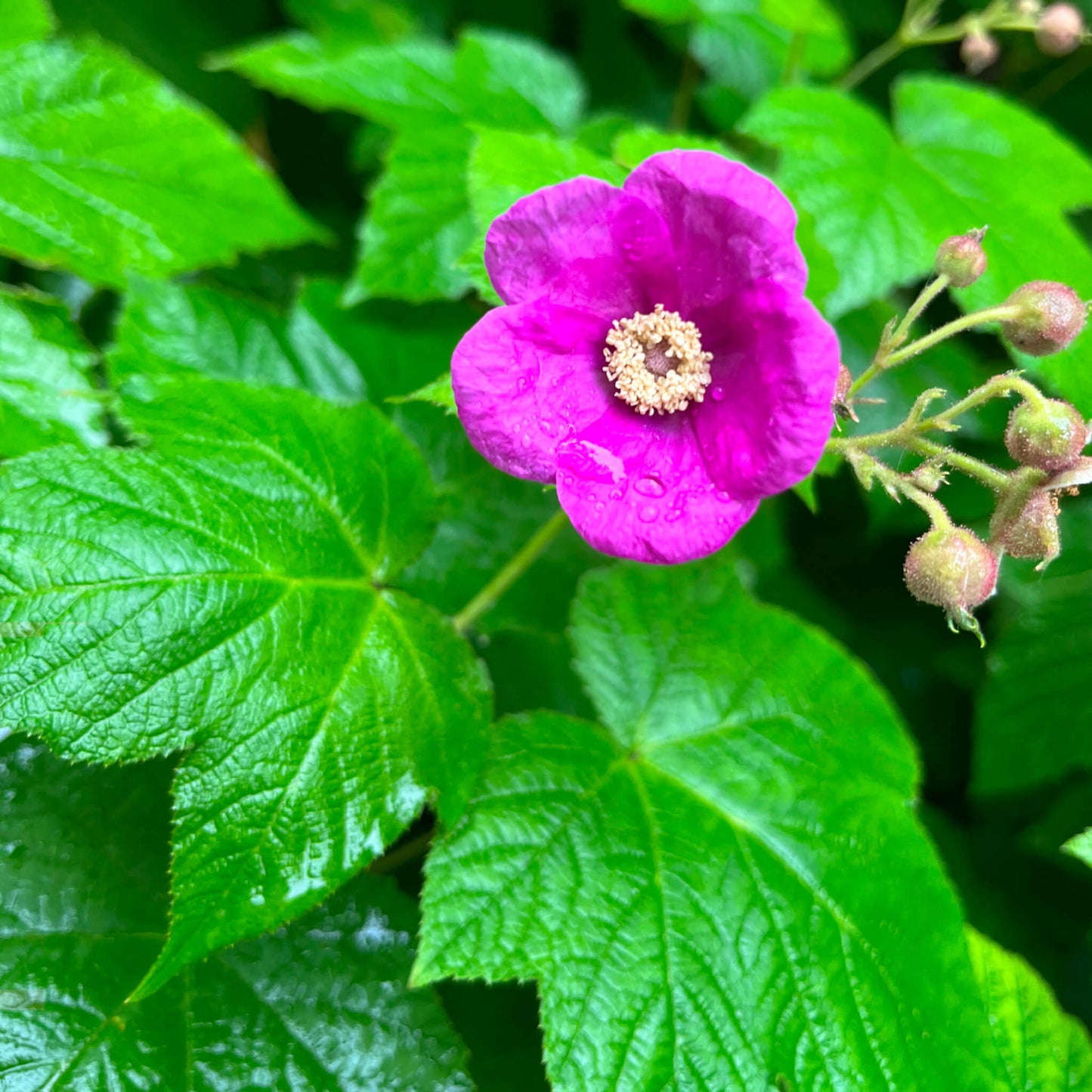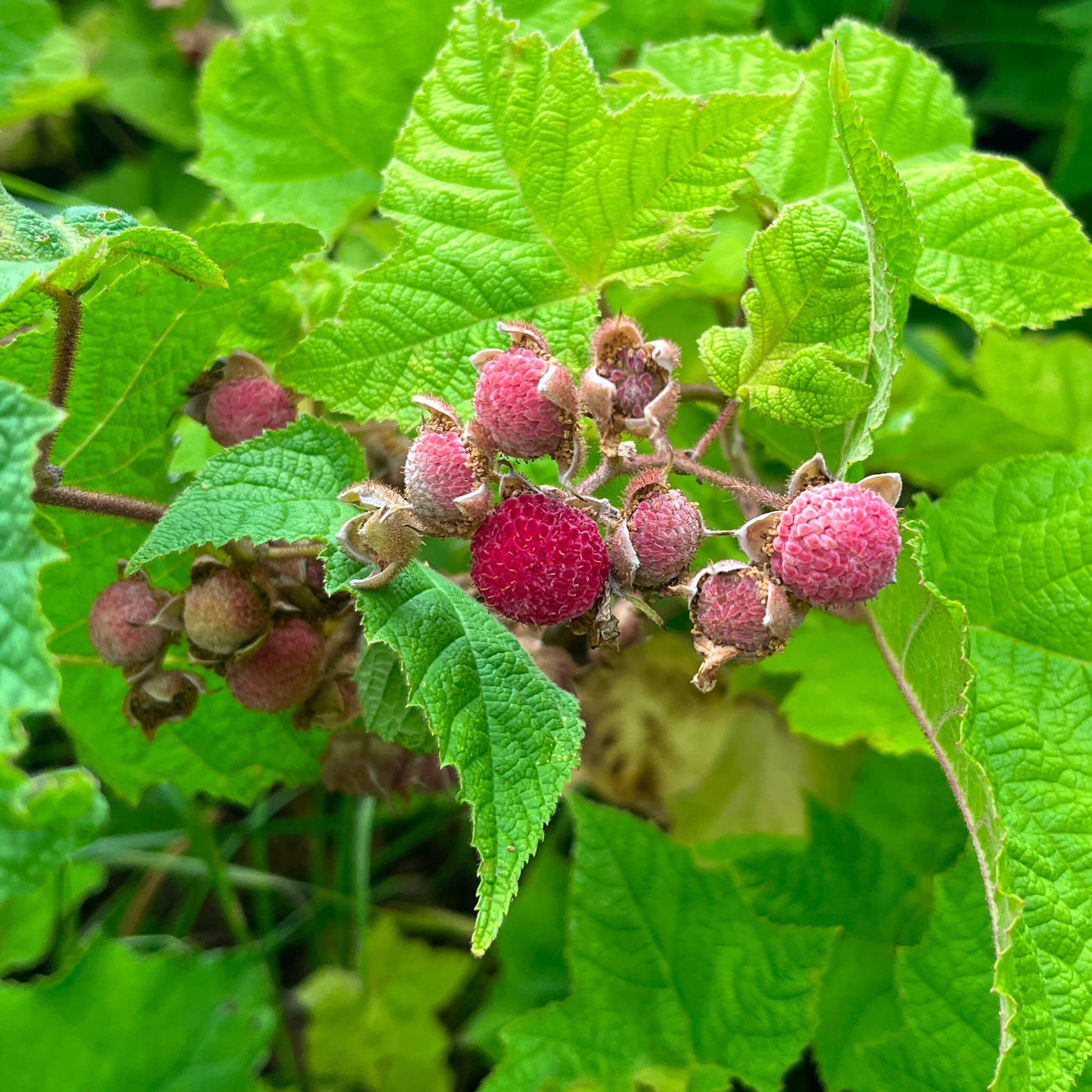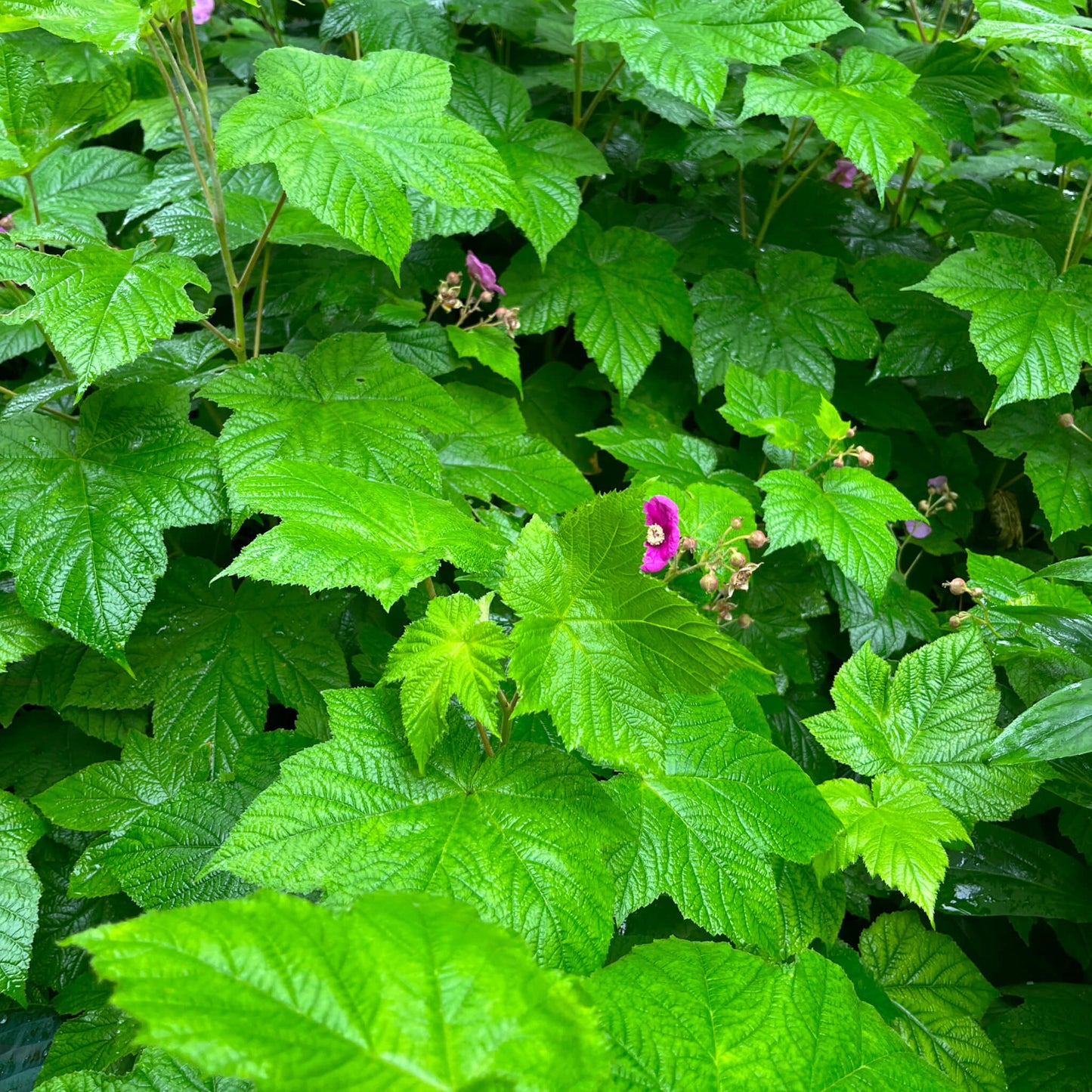This site is protected by hCaptcha and the hCaptcha Privacy Policy and Terms of Service apply.
For successful seedlings,
see the growing notes at the bottom of the page!
Purple-flowering raspberry (Rubus odoratus) is a vigorous shrub, ideal for mass plantings due to its beautiful pink flowers that bloom throughout the summer. Its large green leaves, reminiscent of maple, add an interesting texture to the garden. Highly attractive to pollinators, this plant is a must-visit for bees and other insects, thanks to its abundant nectar and pollen. In addition to attracting various pollinators, it also serves as a host plant for several butterflies, including spotted apatelodes, striped hairstreak, and Canadian tiger swallowtail. Its red raspberry-like fruits can be eaten fresh or made into jelly.
Medicinal and Culinary Uses
The leaves and roots of purple-flowering raspberry are astringent and diuretic. Traditionally, a decoction of the leaves was used to treat mucous membrane issues, such as sore throats and gastrointestinal irritations, and to promote urination. The fruits, enjoyed fresh or cooked, are rich in vitamins and make a tasty addition to jellies, syrups, and pies.
Ecological Roles
Purple-flowering raspberry plays an essential ecological role, particularly in erosion control, thanks to its extensive rhizome system that helps stabilize soils and riverbanks. It provides food and habitat for a wide range of pollinators and butterflies that rely on it as a host plant for their larvae. Integrating this shrub into naturalistic gardens or riparian areas supports local biodiversity while enhancing soil stability in erosion-prone areas.
Purple-flowering raspberry seeds require cold stratification to ensure germination. See the cultivation notes below for more details.
Akène cannot assume any responsibility for the use of plants for therapeutic purposes. Always seek advice from a professional before using a medicinal or edible plant.
Sowing and Growing
Technical Details
Seeds per packet: 125
Family: Rosaceae
Scientific name: Rubus odoratus
Life cycle: Perennial
Hardiness zone: 3
Soil type: Loamy to clayey
Soil moisture level: Medium to slightly humid
Soil - additional attributes: Well-drained
Light: Sun, part shade
Blooming: June to September
Spacing: 120 cm
Height: 200 cm
Deer resistance: Low
Stratification: 90 days
Scarification: Hot water
Germination time: 7 to 21 days
Sowing depth: 3 mm



